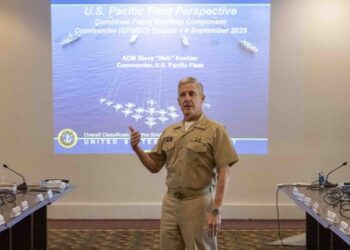The United States Air Force has announced that it will build new silos for its Sentinel intercontinental ballistic missile (ICBM) program, rather than reusing existing Minuteman III silos as originally planned. A spokesperson for the Air Force relayed on Monday that the service is currently assessing options and design concepts, stating, “No decision has been made, [but] we expect Sentinel to use predominantly Air Force-owned real estate to build new missile silos.”
This decision indicates that the Air Force may need to construct hundreds of new silos. The Sentinel program is designed to replace the 400 aging Minuteman III missiles, which are currently deployed across missile fields in Colorado, Montana, Nebraska, North Dakota, and Wyoming, on a one-for-one basis. Defense Daily was the first to report this shift, citing comments made during town hall discussions in the respective states.
Moreover, the entire Sentinel program is undergoing restructuring due to cost projections estimating the total effort at nearly $141 billion, which surpasses the budgetary threshold set by the Nunn-McCurdy Act. Pentagon officials have identified infrastructure and complex launch facilities, rather than the missiles themselves, as the primary factors contributing to the rising costs. Employees at the Pentagon maintain that, despite pausing some progress on Sentinel for restructuring, the program is essential and must continue.
The Air Force’s decision to create new silos comes in light of a recent conversion project at a test launch facility at Vandenberg Space Force Base in California. This project highlighted issues arising from unforeseen site conditions, which led to significant cost and scheduling increases. An Air Force spokesperson stated that ongoing analyses confirmed significant risks related to cost, schedule, and weapon system performance linked to the original plan of converting Minuteman III silos.
When the requirements for Sentinel were initially set a decade ago, the Air Force believed reusing missile silos would be cost-effective. However, General Thomas Bussiere, Air Force Global Strike commander, commented on April 30 that the original assumptions may no longer be valid.
Mackenzie Knight, a senior research associate with the Nuclear Information Project at the Federation of American Scientists, has criticized the decision to build new silos. She attributes this shift to mismanagement and flaws in the program’s initial planning, and she holds Northrop Grumman, the program’s sole-source contractor, responsible for underestimating the complexities of converting the Minuteman silos. Knight suggested that this could either represent deep mismanagement or an intentional effort to downplay the program’s difficulties to make it seem more feasible than extending the lifespan of the current missile force.













